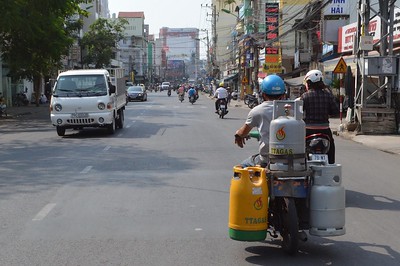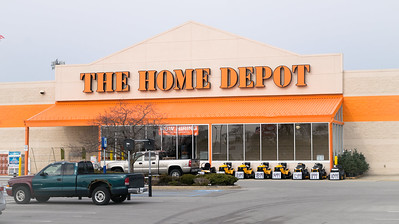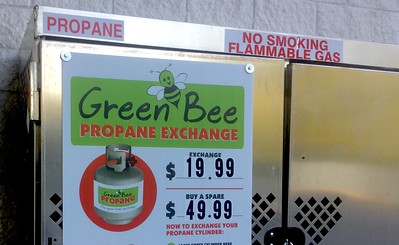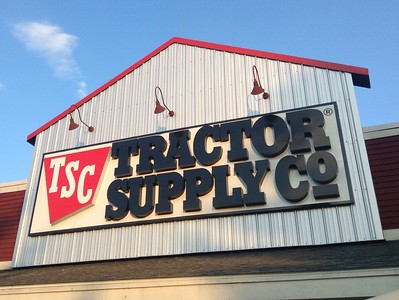
Many people believe that a propane tank must be completely empty before it can be refilled. However, this is not the case. In fact, it is actually quite easy to refill a propane tank without having to empty it first.
The first thing you need to do is locate a propane filling station. These are usually located at gas stations or convenience stores. Once you have found a propane filling station, simply attach the fill hose to the tank and open the valve. The propane will flow into the tank until it is full.
It is important to note that you should never overfill a propane tank. If the tank is overfilled, the excess propane can create a dangerous situation. Always make sure to follow the instructions on the propane filling station carefully.
You can actually refill a propane tank while it still has some propane in it. However, it is important to know how much propane is left in the tank before refilling it. This will help you avoid overfilling the tank and potentially causing an explosion.
If you’re not sure how much propane is left in your tank, the best thing to do is to take it to a professional who can safely check the level for you. Once you know how much propane is left in the tank, you can proceed with refilling it. Be sure to follow all safety precautions when handling and transporting propane tanks.
When To Refill Your Propane Tank?
When you have a propane-powered appliance, it’s important to know when to refill your propane tank. Most people think that they should wait until the tank is completely empty before refilling, but this isn’t the case. You actually should refill your propane tank when it reaches about 20% capacity.
If you wait until the tank is completely empty, you run the risk of running out of propane before you can get to a refill station. This can be a major inconvenience, and it can also be dangerous if you’re relying on propane for heat or cooking.
So how do you know when your propane tank is getting low? There are a few different ways. First, many tanks have a gauge that shows how full they are. If your tank doesn’t have a gauge, you can usually tell by the weight of the tank. When it’s full, it will be very heavy. As it starts to get empty, it will become lighter and easier to carry.
Another way to tell when your propane tank needs to be refilled is by listening to your appliances. If they start making strange noises or not working as well as they normally do, it’s a good indication that the propane level is getting low.
If you’re not sure whether or not your propane tank needs to be refilled, it’s always better to err on the side of caution and go ahead and do it. That way, you’ll
Keep these in mind
Here are a few things to keep in mind: Your usage: Take a look at how much propane you typically use in a month or two. This will help you estimate when you’ll need to refill.
The weather: Colder weather means you’ll likely use more propane as you heat your home or business. In the summer, your usage may go down as you rely less on AC. Keep an eye on the forecast and make sure to refill before a cold snap hits.Your tank level: Obviously, if your tank is getting low, it’s time for a refill. But you don’t want to wait until it’s empty. Once your tank gets below 20%, order a refill so you don’t run out.
By following these simple tips, you can make sure you always have enough propane and avoid any inconvenient (and costly) refills.
How can you tell if a propane tank is full or empty?
If you have a propane tank that you need to check the level of propane in, there are a few ways that you can tell if it is full or empty. One way is to look at the gauge on the side of the tank. Most propane tanks have a gauge that will tell you how much propane is left in the tank. If the gauge says that the tank is empty, then it is most likely empty.
Another way to tell if a propane tank is full or empty is by weight. If the propane tank is Light, then it means that there is propane left in it. If it feels Heavy, then the tank is most likely full.
If you are still not sure if the propane tank is full or empty, you can always ask someone at the store where you bought it from, or call the company that owns the tanks.
If your tank is relatively old or outdated and you are not sure if it is retested, consult a professional. Make sure that the tank is recertified before you can refill it.
What is Propane Tank Inspection?
Propane tank inspection is the process of checking your propane tank for leaks, corrosion, or other damage. This is important to do on a regular basis, as propane is a highly flammable gas and can pose a serious risk if not properly cared for.
There are a few different ways to inspect your propane tank. One is to simply look it over for any signs of damage, such as rusting or dents. Another way is to use a propane leak detector solution; this can be found at most hardware stores. Simply mix the solution with water and apply it to the outside of the tank. If there are any leaks, the solution will change color.
If you suspect that your propane tank may have a leak, it is important to have it replaced or repaired as soon as possible. Leaks can be very dangerous, and even small ones can lead to big problems if not taken care of right away.
Tank inspection is a safety check that is conducted on a propane tank to ensure that it is in good working condition. The inspection includes a visual check of the tank for any signs of damage or wear, as well as a pressure test to ensure that the tank can hold the proper amount of propane.
How full can you fill a propane tank?
The average 20-pound propane tank holds approximately 4.5 gallons of propane. That means that, at 80% capacity, the tank would be full with 3.6 gallons of propane. However, it’s generally not a good idea to fill a propane tank all the way to capacity. In fact, most experts recommend filling a propane tank to no more than 80%. This allows for expansion of the propane in the tank if the temperature outside increases.
Where Do I Refill a Propane Tank?
You can refill a propane tank at any number of places. The most common place to do so is at a gas station, but there are also some hardware stores and other retailers that sell propane. To find the nearest place to you that sells propane, simply do a search online or ask around for recommendations.
There are many companies that sell and deliver propane. They can come to your home or business to refill your tank. Gas stations: Some gas stations have a propane filling station where you can refill your own tank. Hardware stores: Some hardware stores have a propane filling station as well.
Once you’ve found a place to fill up, the process is fairly straightforward. The staff will attach a hose to your tank and fill it up until it reaches the proper level. They’ll then detach the hose and give you the bill.
That’s all there is to it! Refilling your propane tank is easy once you know where to go.
Propane Refill vs Exchange
The debate of whether to refill or exchange your propane tank is one that has been around for a while. There are pros and cons to both options, so it really comes down to what is best for your particular situation. Here, we will take a look at the pros and cons of each option to help you make the best decision for your needs.
A propane refill is when you fill up an empty propane tank with fresh propane. A propane exchange is when you trade in your old, used propane tank for a new one that’s already been filled with propane.
So, which one should you do? It really depends on a few factors. If your old propane tank is still in good condition and hasn’t been used much, then a refill is probably the way to go. You’ll save money by not having to buy a new tank, and you can reuse your old one. However, if your old tank is starting to show signs of wear and tear, or if it’s been used a lot and is running low on propane, then an exchange may be the better option.
You’ll get a brand new tank that’s already been filled with fresh propane, and you won’t have to worry about your old tank running out of gas in the middle of cooking. So, there you have it! The difference between a propane refill and a propane exchange. Now that you know the facts, you can decide which option is best for you next time you need to refuel your grill.
The main advantage of refilling your propane tank is that it is typically cheaper than exchanging it. For example, if you have a 20-pound propane tank, you can expect to pay about $15 to have it refilled. An exchange, on the other hand, would cost you about $20. So, if you are on a tight budget, refilling your tank is definitely the way to go.
Another advantage of refilling your propane tank is that you don’t have to worry about losing any money that may be left in your current tank. With an exchange, you would simply be given an empty tank in exchange for your full one, meaning that any propane that was left in your old tank would be lost.
However, when you refill your own tank, you only pay for the amount of propane that you actually use. This can be a big advantage if you tend to have a lot of propane left over in your tank at the end of each week or month.
To Make a Conclusion
You can refill a propane tank before it is completely empty. Propane tanks are equipped with a safety device called an overfill protection device (OPD) that is designed to prevent the tank from being overfilled. The OPD will shut off the flow of propane when the tank reaches 80% capacity, so it is not possible to completely fill a tank that is not already empty.
If a propane tank is not completely empty when it is refilled, it is important to ensure that the tank is not overfilled. This can be done by checking the tank’s gauge or weight before and after refilling to ensure that it is not more than 80% full.
It is also important to follow proper safety guidelines when handling and refilling propane tanks. This includes using the correct equipment and following the manufacturer’s instructions for refilling the tank. If you have any further questions or concerns about refilling propane tanks, I would be happy to help.

Mike is an experienced propane technician with over 15 years of professional experience in the field. He has dedicated his career to helping customers with their propane needs, from installation to maintenance and repair. Together with Jeremy, he co-founded this website to provide useful information and guidance to customers seeking reliable propane services.




